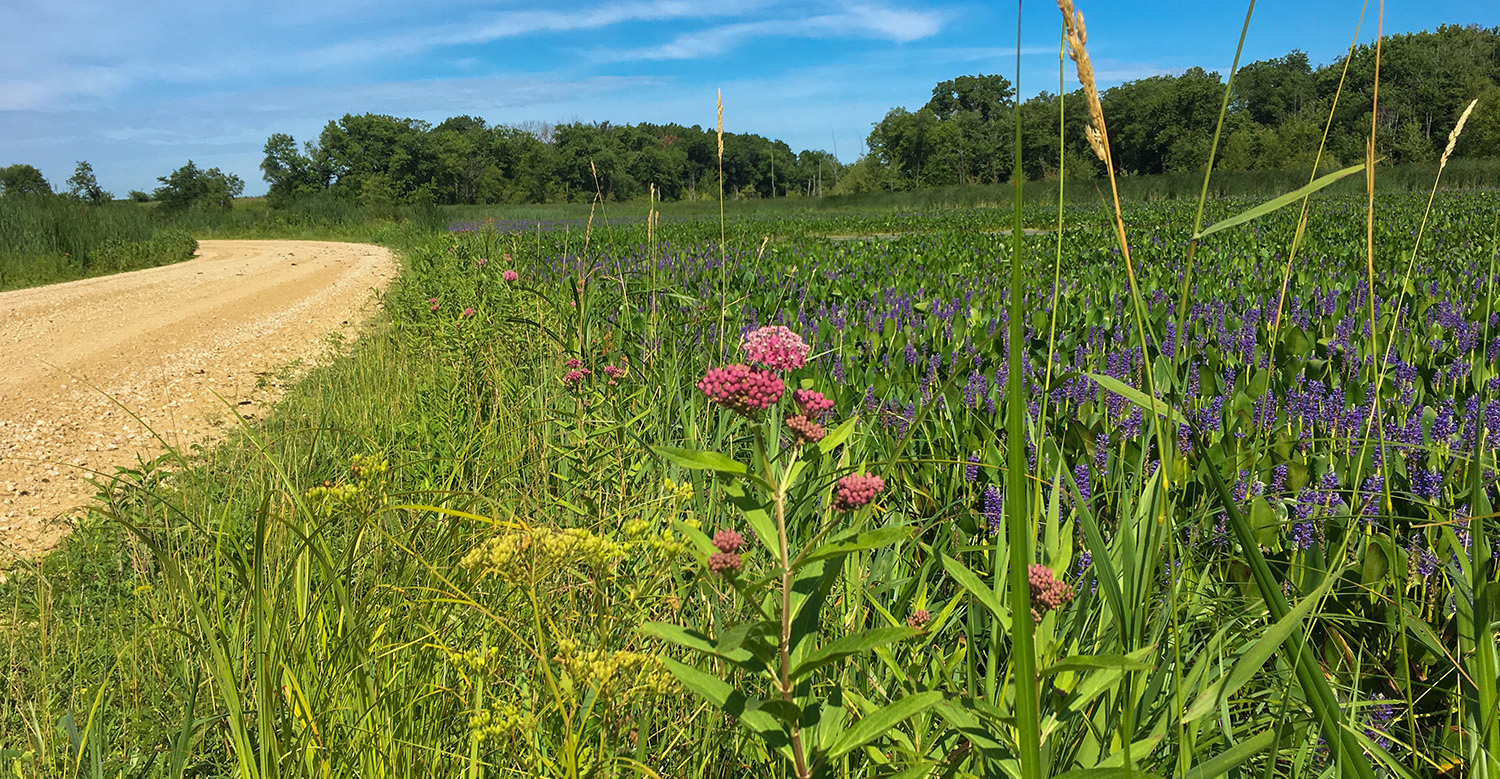Chapter 3: Communication
Chapter 3: Communication thompsbb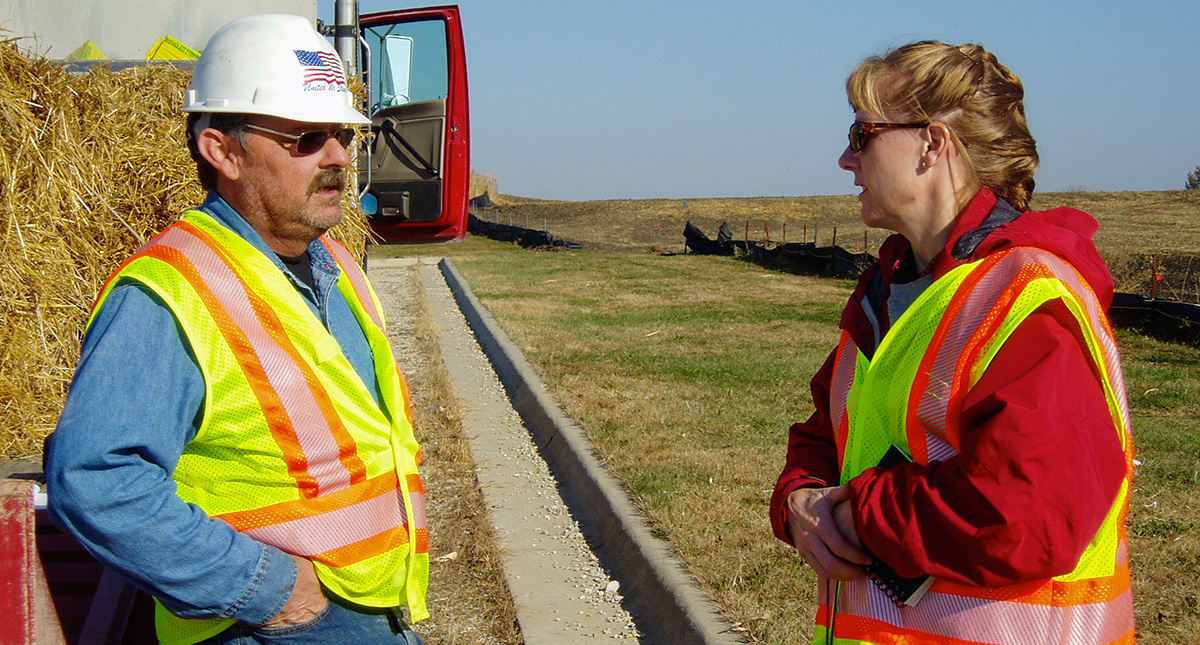
Effective communication with county or city officials and the public is essential for building and maintaining support for an integrated roadside vegetation management (IRVM) program. Although roadside managers are busy with many responsibilities, regularly investing time in communication can pay dividends toward helping a program succeed.
Some roadside managers have been surprised at how they have been able to successfully use communication to gain support for their roadside programs from initially skeptical truck drivers, engineers, county supervisors, and others.
No matter who you are interacting with, best practices include
- being available and approachable to anyone seeking information or assistance;
- fostering trust by actively listening to stakeholders to understand their needs and consistently following through to accommodate their needs;
- promptly addressing complaints, concerns, and questions; and
- becoming the local expert on roadside management products and techniques and effectively explaining them to individuals unfamiliar with natural resources work.
Specific strategies for communicating with different stakeholders are presented below. As you read, keep in mind the amount of promotion and publicity needed to meet your goals can vary by county or city. A low-key approach might yield better results depending on local dynamics.
County Officials
County Officials thompsbb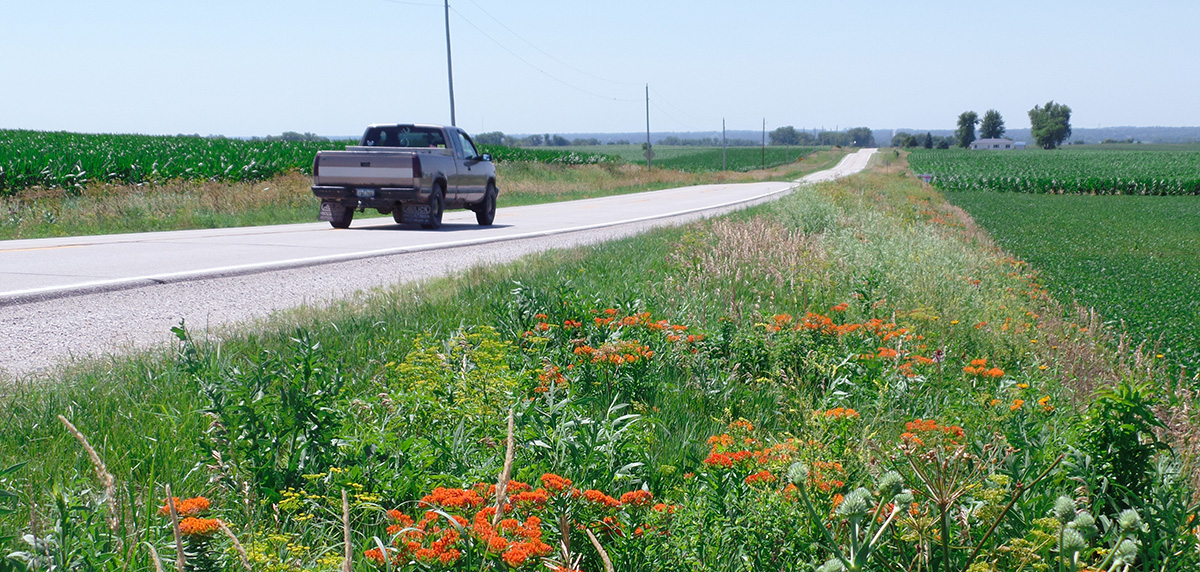
County Board of Supervisors or City Council
Of all the relationships a roadside manager has, the relationship with the county board of supervisors (or city council for municipal roadside managers) is in many ways the most important. Supervisors approve IRVM program budgets, support grant applications, oversee individual projects, and more. Building and maintaining a close, collaborative relationship with the board lays the groundwork for a successful roadside program and sets the roadside manager up for success.
Members of the county board of supervisors can better understand roadside management programs if the roadside manager provides quarterly reports at board of supervisors meetings and invites supervisors on regular shop visits and tours. Engaging supervisors in discussions aligned with their interests, such as spraying weeds and brush mulching, helps build good relationships.
For example, aggressively spraying noxious weeds during the peak months of June and July and communicating about that work to the supervisors via an email update is one way to gain positive attention. Demonstrating progress in problem areas by sharing pictures of spraying and quantifying the work in acres treated shows the value of the work of the roadside manager. Showcasing projects and showing the supervisors that the work of the roadside manager is just as integral as any other facet of county road maintenance also helps garner support.
County Roads Department
Internal communication and outreach help foster good relationships, collaboration, and goodwill, including with colleagues in departments with which roadside managers work closest—county roads or city streets departments. A well-connected roads/streets team also makes for smoother workflows and decision-making processes.
Keeping engineers and secondary roads superintendents updated about planned actions is key to maintaining alignment with road projects. Involving secondary roads employees in brush control activities that transition from manual to more effective methods establishes good rapport with the roads department.
Offering training sessions to secondary roads employees on invasive plants, herbicide safety, and environmental concerns is beneficial for both departments.
Remember, because the roadside vegetation program staff consists of only 1–4 people, making connections with other staff is crucial. The benefits of being an integrated part of the county or city government are plentiful, and the consequences of allowing yourself to become siloed could put the program’s future at risk. These additional internal communication practices are worth considering:
- Be responsive. Fieldwork is the lifeblood of your job, but being out of the office frequently does not mean you should be hard to reach. Schedule time at your desk so you can reply to emails and return phone calls within 24 hours.
- Share updates from roadside vegetation management with the staff member responsible for county or city internal communications. They may include what you share in internal email updates, printed newsletters, etc.
- Offer to provide content about your program’s work for bulletin boards or display cases in county or city facilities.
- Introduce yourself to the county or city director of communications (or equivalent title) and express your interest in keeping county or city staff informed about the program.
- Volunteer for internal committees (e.g., social, hiring, strategic planning) to show your willingness to collaborate and make connections outside of the roads/streets team.
County Conservation
Leveraging collaboration between departments, such as the conservation board and public works staff, supports the transition toward an integrated approach in proposing ideas. Many of the tips for internal communication for the county roads department listed above can also apply to the county conservation department.
Reports About Iowa County Officials’ Perspectives on Roadside Vegetation Management

In 2016 and 2017, the Tallgrass Prairie Center (TPC) roadside program manager conducted research funded by the Living Roadway Trust Fund (LRTF) on perceptions of roadside vegetation management from roadside managers, county engineers, county conservation board directors, and chairs of the boards of supervisors. Personnel from all Iowa county officials were surveyed, regardless of whether they had a roadside program or not. The research was conducted with social scientists from the UNI Center for Social and Behavioral Research.
The survey results provide a sense of what stakeholders you will be working closely with think about topics such as mowing, soil erosion, cost savings, and the influence of roadside managers on the county’s overall approach toward use of native vegetation. These insights can be helpful to draw from when considering what topics to prioritize and emphasize when communicating internally. It is still important to talk to the stakeholders in your county or city to find out where they stand, as their opinions may vary from the general sentiment gathered from the survey. However, the survey results do provide helpful background information that can inform your strategic communications approach.
Survey questions for roadside managers and engineers primarily focused on how they manage roadside vegetation, such as:
- What have been your primary challenges in the greater use of native species?
- How often are your plantings typically mowed within one year of seeding?
- What weed prevention measures does your agency currently undertake in your county?
Survey questions for chairs of the board of supervisors and county conservation board directors included the following:
- What factored into your county’s decision to hire a roadside manager?
- How concerned are you about the possible effects of local prescribed burns?
- How much impact do each of the following items have on your county’s decisions about roadside vegetation management?
Reports summarizing results from all of these surveys can be found on the Tallgrass Prairie Center's "Survey Reports" page.
Understanding and Responding to Landowner Concerns
Understanding and Responding to Landowner Concerns thompsbb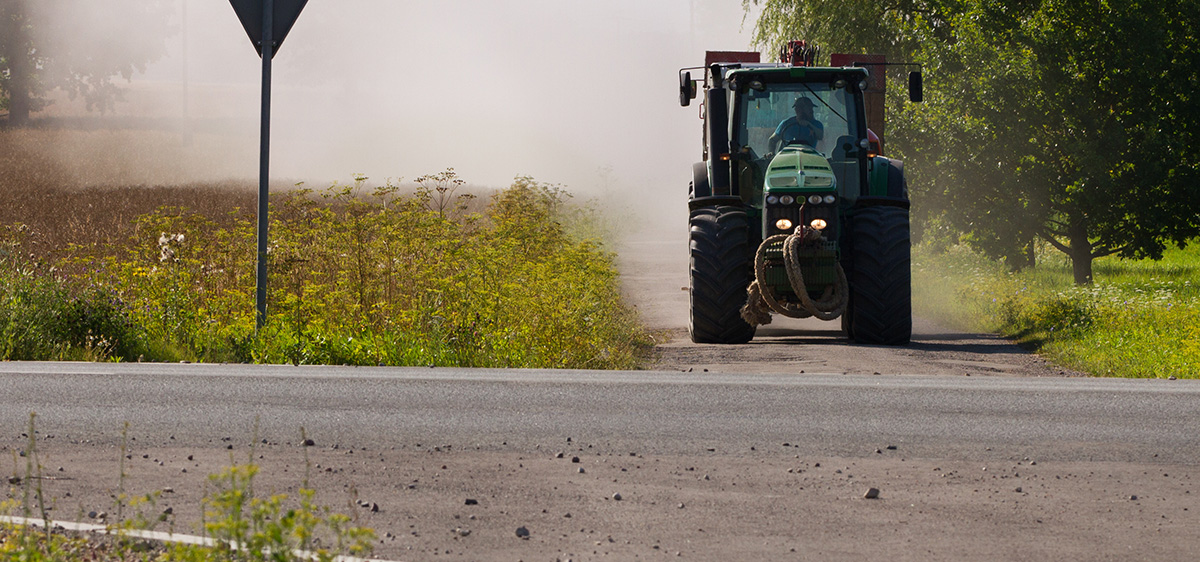
Roadside managers enjoy a harmonious relationship with most landowners who live near roadsides they manage. However, some landowners will be critical of the IRVM approach. Some fear an increase in weed encroachment from the roadside, while others object to the appearance of native vegetation in the roadside. They may contact the roadside manager to voice their complaints. It is important to ask clarifying questions to understand their concerns before responding. The following scenarios and suggested clarifying questions are based on roadside manager feedback during a presentation about communication at the 2023 Roadside Conference.
Scenario 1
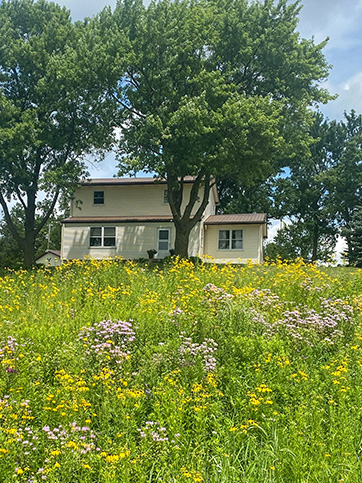
A landowner who moved from a city setting to a rural setting is unsatisfied with the unclean appearance of roadside plants and brush.
Suggested clarifying questions:
- What brought you from the city to the county?
- How would you define “unclean appearance?” What specifically is unappealing to you about the roadside?
- What would you like to know about how the roadsides are managed?
This information can be used to tailor a response to address the landowner’s specific concerns:
- Talk about the vegetation, explain what species are there, and help them make a connection between specific plants and the need for them to grow in a more natural manner, which may change the person’s mind about how the roadsides look.
- Enhancing roadsides is an investment in Iowa’s native habitat and wildlife that also keeps our roadsides safe.
Scenario 2
A landowner is concerned about roadside weeds encroaching on their property.
Suggested clarifying questions:
- Which weeds are causing you problems?
- What specific weed pressure (the visual percentage of how much volume weeds are occupying in a given agricultural area) issues do you have?
- What practices are you using to control weed pressure on your property?
This information can be used to tailor a response to address the landowner’s specific concerns:
- I would like to come take a look at the problem, assess the area, and come up with a solution for both you and the county.
- Native long-lived plants in roadsides suppress the kinds of weeds that tend to cause problems in crop fields.
- Explain the source of the weeds, whether it is from a neighboring property or from the roadside. If it is from the roadside, explain how you will remedy the situation.
Preventing Mowing and Spraying of Plantings
Sometimes, even after you have spent years maintaining a planting or remnant, the adjacent landowner may mow or intentionally spray it with herbicides, violating Iowa Codes 317.11 and 317.13. If this happens routinely with the same landowner, you may want to pursue monetary redress with the county or city attorney. However, if you are proactive with your communication strategy, you may be able to avoid having to take such action.
Some roadside managers have taken the preventative step of talking to landowners or placing doorknob hangers on their doors. In the form of a letter or brochure, roadside managers can explain why they are planting and maintaining native plants in the roadside, why the need for mowing and herbicide use is greatly reduced with such vegetation, and provide contact information. Subsequently, you could provide an annual one-page handout with text and photos updating landowners on progress made over the last year, any “by-the-numbers” facts (e.g., acres planted/maintained and cost-savings estimates), and any other news from the past year (e.g., new equipment purchase, new signage, grant funding secured). Make sure to include your name and a head-and-shoulders photo of yourself to make the communication more personal.
Establishing relationships and maintaining them is crucial to preventing adjacent landowners from mowing and spraying in the roadsides. This cannot happen without communication that shows respect for landowners and an understanding of the legitimate stake they have in how the roadsides are managed. Human nature indicates the landowners will treat you with reciprocal respect and deference to your area of expertise.
Public Outreach
Public Outreach thompsbb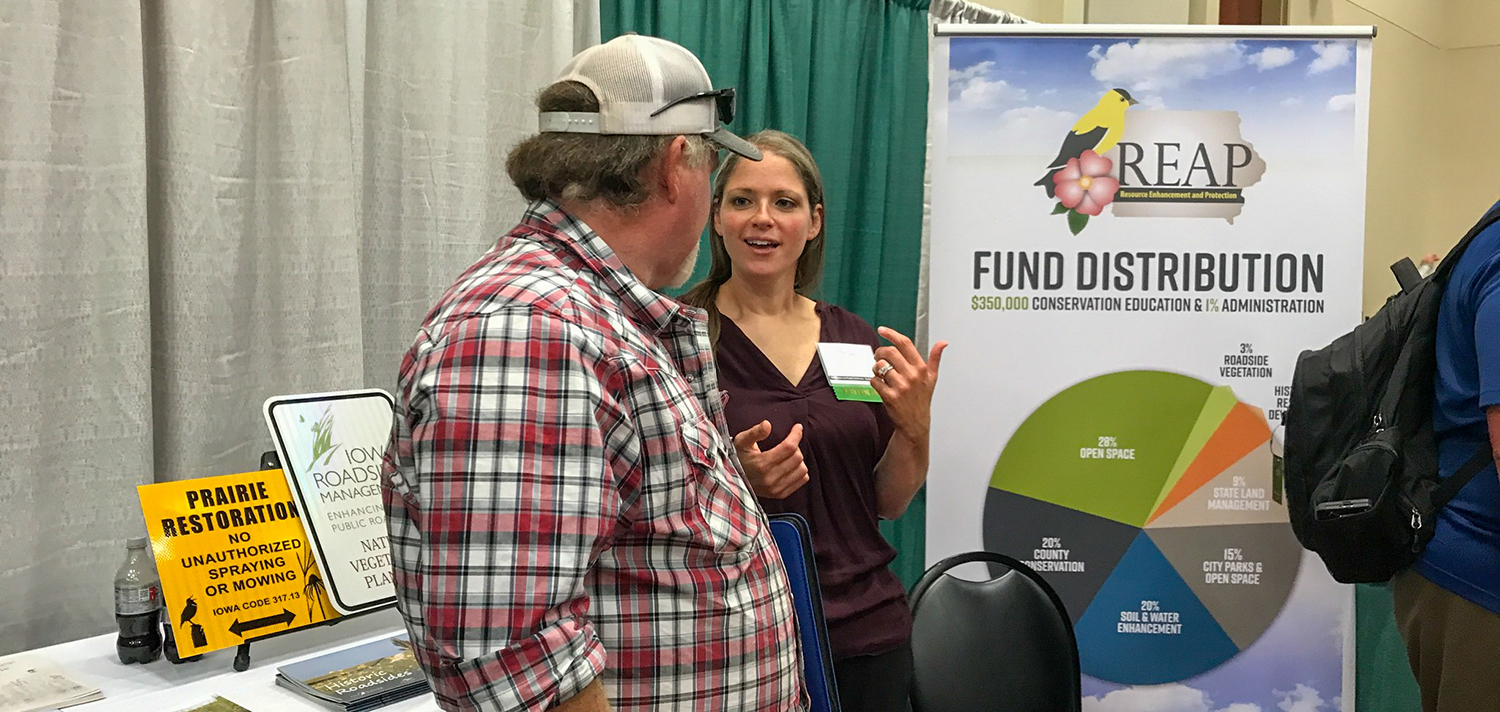
Programs, Partnerships, and Events
Public Meetings and Community Events
Attending community events and public meetings can be an effective way to engage with the community. For example, some roadside managers have a booth at the county fair. Other events that may offer opportunities to set up an information booth include city festivals, Independence Day celebrations, harvest festivals, free outdoor concert series, farmers markets, and more.
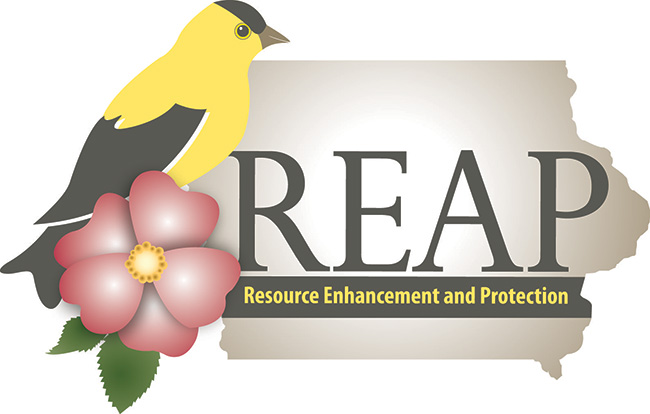 In odd-numbered years, the Iowa Department of Natural Resources holds Resource Enhancement and Protection (REAP) regional assemblies around Iowa. These assemblies are public meetings where citizens can learn about REAP expenditures and provide feedback. Since 3% of REAP funding goes toward roadside vegetation management, roadside managers often attend the meetings in their regions to answer any questions about how those dollars are spent on managing local roadside vegetation.
In odd-numbered years, the Iowa Department of Natural Resources holds Resource Enhancement and Protection (REAP) regional assemblies around Iowa. These assemblies are public meetings where citizens can learn about REAP expenditures and provide feedback. Since 3% of REAP funding goes toward roadside vegetation management, roadside managers often attend the meetings in their regions to answer any questions about how those dollars are spent on managing local roadside vegetation.
County board of supervisor meetings and city council meetings also provide opportunities to convey to the public what you do and why you do it. Citizens who are active in local government attend in person. Others may watch the meetings on local government television channels, and many meetings are streamed live and/or archived online. Local reporters may be in attendance, providing an opportunity for additional media coverage. Maintaining a good relationship with supervisors and councilors as described above is a great way to get invited to meetings. But do not hesitate to reach out to staff who set the agendas for these meetings if you have not presented recently. See Chapter 2: Steps to Start a Roadside Vegetation Program for more on being a part of these meetings in the early stages of implementing an IRVM program.
Organizing Volunteer Events for Residents
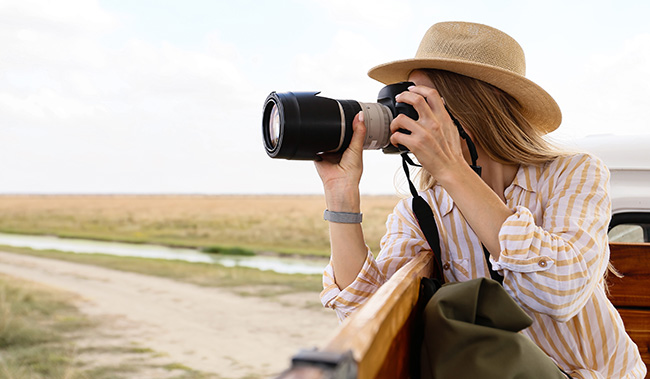
Volunteers familiar with the roadside program may be able to assist with community outreach through activities such as giving educational talks, writing letters to the editor supporting the roadside program, and taking attractive roadside photos. Organized events such as roadside trash cleanups could be a good activity for groups. Although coordinating with volunteers takes time, their involvement can generate support for the program and result in media coverage.
Presentations for Community Groups and Schools
In every community, there are organizations and entities looking to fill time at their meetings with presentations about what is happening in the community. Members of these groups tend to be very involved in the community and have positive relationships across all sectors of public life. They are great to have as allies. Groups that roadside managers have spoken to include local chapters of master gardeners, master conservationists, Sierra Club, Pheasants Forever, Rotary Club, and Kiwanis Club. The TPC roadside program manager has a PowerPoint template with information about the benefits of roadside programs that roadside managers can request and modify to suit their needs.
Roadside managers have also spoken to school classes and extracurricular groups. The TPC roadside program manager may have stickers available for roadside managers that are popular with schoolchildren. If your county has a TPC root banner, bring it with you and invite children to lay down next to the banner so they can be amazed by how their height compares. Other educational activities related to prairie roots that meet Iowa educational standards are provided on the Educator Resources page of the TPC website.
Press Releases
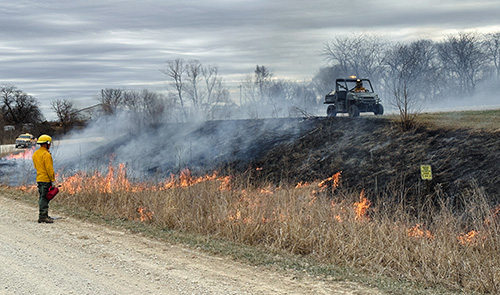
Press releases can be used to notify landowners and the public about upcoming work to maintain transparency. You can also notify local reporters in order to generate media coverage for instances such as hiring a new roadside manager, receiving grant funding, and re-approval of the county or city IRVM plan. Some roadside managers also annually issue a press release about Iowa's mowing law, which restricts citizens from mowing roadside vegetation before July 15, with some exceptions. See Appendix 3A for a sample press release on this topic.
County or city communication staff can help write and distribute press releases. If you are distributing them on your own, email them (in the body of the email) to any reporters who have covered your work in the past and any generic or press release email addresses at local newspapers and television stations.
Collaborating With Nonprofit Organizations
Assisting with events such as field days and prescribed prairie burns hosted by nonprofit organizations can lead to valuable partnerships and publicity.
Providing Equipment Rentals
Some county roadside programs, especially those located within the conservation department, will rent equipment such as seed drills to the public to build goodwill with the community.
Adopt-a-Prairie Program
A few county roadside programs have partnered with landowners to reestablish prairie vegetation in the roadside bordering their property. Landowners can apply and, if approved, the roadside manager removes the existing vegetation and replaces it with native vegetation. There does not need to be a road regrading project associated with the reseeding. See an example application for participating in an adopt-a-prairie program from Scott County.
Outreach Materials and Signage
Signage for Plantings
Installing signage lets the public know that a planting is intentional and can help to avoid the perception that native roadside vegetation is just a bunch of weeds. Use signage in plantings and high-quality areas to showcase native species. Some counties prefer to print their own signs that include the county logo. Iowa Prison Industries is commonly used to print signs for local governments. Signs can include language such as “Roadside Prairie” or “Native Vegetation—Do Not Mow or Spray.” Counties that have an adopt-a-prairie program for residents and want a large number of signs can check with the LRTF coordinator to see if they can apply for an LRTF grant to cover the cost. Counties can also obtain signs from the TPC roadside program manager, who uses LRTF funds to pay Iowa Prison Industries to print a limited number of signs each year. Check with the program manager for sign availability.
For landowners who want to know where they can get signs for their prairie plantings on private property, see suggestions from the TPC.
Frequently Asked Questions
As you communicate with various constituencies, they are likely to have questions, a good sign they are interested and engaged. To help you as you field questions, the TPC website includes a list of frequently asked questions and responses regarding roadside vegetation management. If you are frequently asked questions that you think would be helpful for others to see on the FAQ page, let the TPC roadside program manager know.
Posters and Guidebooks
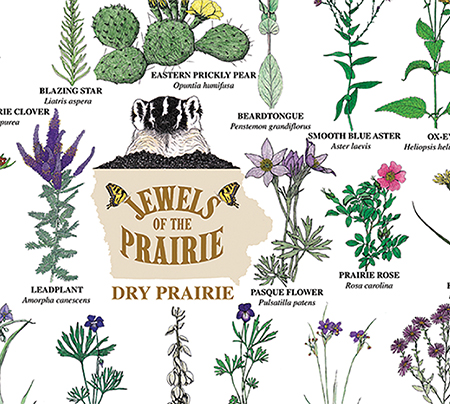
The Living Roadway Trust Fund has free eye-catching posters available such as the seven beautifully illustrated guides to prairie plants and animals in the “Jewels of the Prairie” poster set; the pollinator poster series; and a “Roadsides of Opportunities” poster.
The LRTF also has free spiral-bound guidebooks on how to identify pollinators, seedlings, trees, and shrubs. These books are great to have available when tabling at community events. The TPC roadside program manager may also have some available.
Brochures
Roadside Management Series
The TPC roadside program manager has brochures on roadside vegetation topics such as Iowa’s mowing law and landowner questions regarding roadsides.
How to Restore Prairie
The TPC has a set of 10 brochures that provide detailed how-to technical information for topics such as collecting seed, designing seed mixes, site preparation, seeding, and maintaining plantings. The information is distilled from the TPC Guide to Prairie Restoration in the Upper Midwest.
Banners and Roots
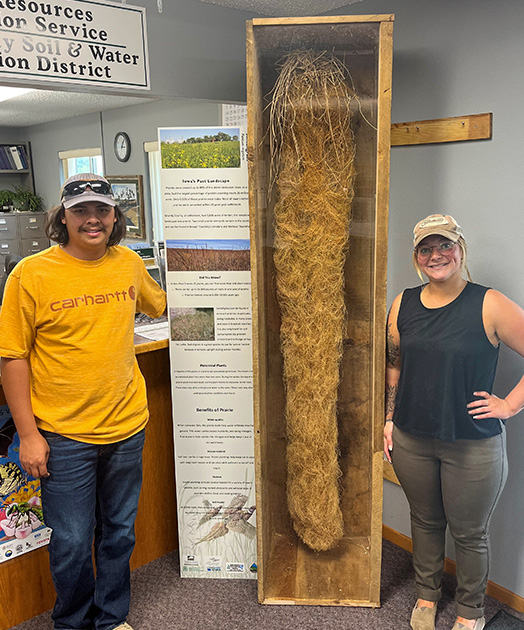
Banners with life-size images of roots available for ordering from the TPC capture people’s attention by conveying the tremendous density and size of prairie root systems like those found in roadside vegetation. Approximately 14-feet long when unfurled, these portable and durable banners roll up for easy storage. Some counties or cities display them in the local nature center, library, or county courthouse.
Prairie Root Specimens
Prairie root specimens ) from the TPC that are up to ten feet long are especially effective physical tools for public outreach. Similar to the prairie root banners, counties may display prairie root specimens at the local nature center, library, or county courthouse. To cover the cost of growing the roots over three years, the TPC charges over $2,000 per root specimen plus shipping.
Other Promotional Materials
Stickers
The TPC roadside program manager may have stickers available for request that read “Roadsides for Wildlife” or have the Iowa Roadside Management logo.
Pull-up Banner
The TPC roadside program manager may have pull-up banners with roadside vegetation information that can be borrowed for tabling at local community events. They may be shipped or picked up at the TPC in Cedar Falls.
Wall Calendar
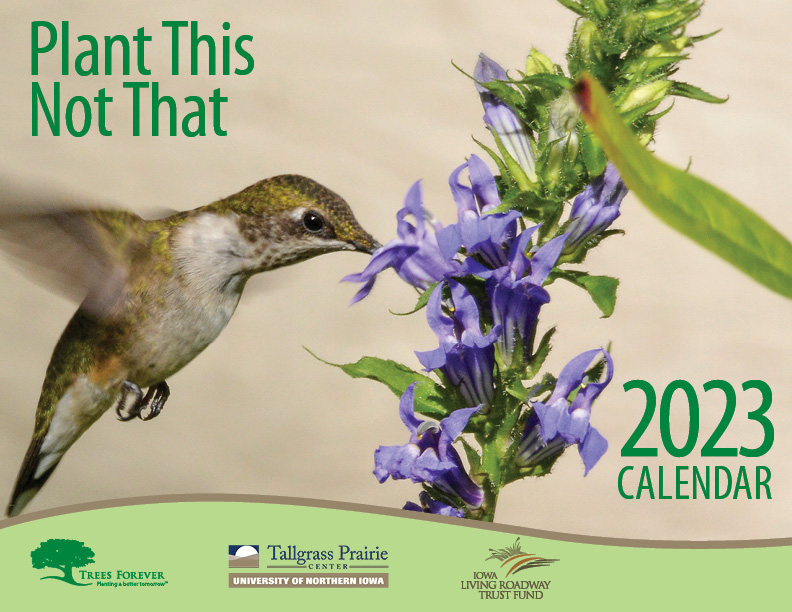
The TPC roadside program manager produces an annual wall calendar with a theme related to roadside vegetation management. Previous themes have included “Historic Roadsides,” “Celebrating Remnants,” and “Plant This Not That.” Wall calendars are mailed to roadside programs in the fall.
Lesson Plans
The following lesson plans are available at the Tallgrass Prairie Center website.
Roadside Curriculum
The Iowa Roadside Management Office collaborated with a team of Iowa educators to create nearly 30 educational activities that relate to roadside vegetation, with topics including changes in roadside vegetation over time, how we define what a weed is, and looking for roadside wetlands.
Prairie Roots Lessons
In collaboration with the Tallgrass Prairie Center, a team of Iowa educators created a set of prairie roots lesson plans that align with Iowa Core standards for upper-elementary and middle-school students. Roadside managers can share the lessons with local educators or teach them when visiting schools.
Social Media
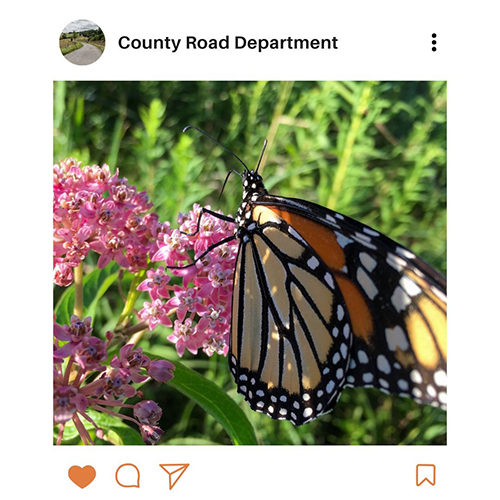
Social media platforms like Facebook, Instagram, and others are great ways to engage with those who support your efforts and other users (through shares from your followers) alike. It is most common for roadside programs to occasionally help draft posts for larger umbrella social media accounts, such as the county conservation board, county road department, or the main county or city accounts. A few roadside programs also have their own social media accounts. It is best to post at least once a week to encourage engagement and garner reach.
The TPC roadside program manager maintains Iowa Roadside Management Facebook, Instagram, and YouTube accounts.
Recordkeeping and Cost Data
Good recordkeeping is an important part of effective communication because it facilitates transparency, builds trust, and helps to justify the roadside manager position. Accurate and up-to-date digital recordkeeping is a vital part of a roadside manager’s job and should be started immediately. Detailed, readily-accessible records provide an easy data supplement (including number of acres planted, volume of seed obtained through the Tallgrass Prairie Center's Iowa Roadside Management Office, and the number of locations sprayed) when roadside managers report to county boards of supervisors or city councils.
Documenting expenses and material use is particularly useful, as it can be used as proof of the money and labor-saving benefits of IRVM, particularly when it comes to reduction of mowing and spraying. It is advisable to keep separate records for herbicide applications, as roadside managers are required to document every time they spray.
As mentioned earlier, records documenting locations of roadside plantings are especially useful. Many roadside managers have partnered with their county’s geographic information system (GIS) division to develop useful tools for this purpose.
Report About Public Perspectives on Roadside Vegetation
In 2016, Trees Forever received funding from Living Roadway Trust Fund to oversee research on how key stakeholders, legislators, and other citizens view LRTF’s mission. Reports summarized results related to target audiences, resonating messages, and ways to drive engagement and support. These findings may be useful as you conceptualize your communications plan.
More on Communication Strategies
For more information on internal and external communications strategies related to roadside vegetation management, see the National Academies of Sciences’ “Pollinator Habitat Conservation Along Roadways, Volume 10: Midwest” guide, "Chapter 11: Communication Support.”
